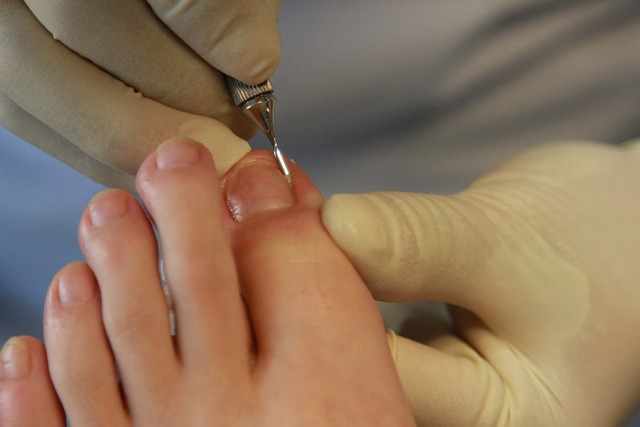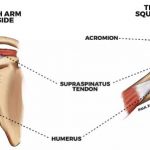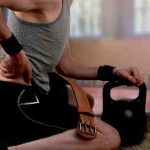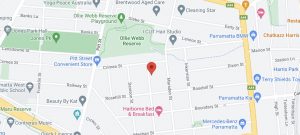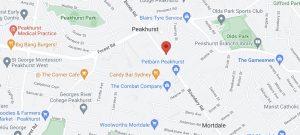Treating Corns and Calluses: Your Trusted Podiatrist in Parramatta
Welcome to the leading Corns and Calluses Treatment Clinic in Parramatta, where our expert podiatrists are dedicated to providing specialised care for these common foot conditions. We understand that corns and calluses can cause not only discomfort but also restrict your mobility and overall well-being. Our highly skilled podiatrists are here to offer tailored and effective solutions to help you regain your foot health.
With a primary focus on addressing corns and calluses, we bring the latest podiatric techniques and patient-centered care to the forefront of your treatment. Our goal is to alleviate your discomfort and provide you with the guidance you need to maintain healthy, pain-free feet. Bid farewell to the pain and discomfort caused by corns and calluses and step into a brighter, pain-free future with our specialised treatment services.
What are corns and calluses?
Corns and calluses, collectively known as hyperkeratotic skin conditions, are characterised by the thickening of the skin in response to extra or repeated pressure and friction. These conditions develop as a natural protective response of the skin when subjected to concentrated forces. In particular, corns, small areas of thickened skin with a central core, and calluses, larger, flat regions without a central core, often form on the feet. Ill-fitting footwear, among other factors, can contribute to the development of these conditions. The skin thickens to create a protective barrier against friction and pressure, commonly occurring on the balls of the feet, the sides of the toes, and other high-pressure areas.
What is the difference between Corn and Callus
Corn and callus are both types of skin conditions that can occur on the feet. However, they have some differences in their appearance, location, and cause.
Corn is a type of thickened skin that usually appears on the tops or sides of the toes, and sometimes on the soles of the feet. It is usually small and round, with a center that can be hard and yellowish, surrounded by inflamed skin. Corns are often caused by repetitive friction or pressure on the skin, usually from ill-fitting shoes or tight socks. They can be painful and may make it uncomfortable to wear shoes.
Callus, on the other hand, is a more widespread area of thickened skin that typically appears on the soles of the feet or the palms of the hands. It is often larger than a corn, and the skin is typically less inflamed. Calluses are usually caused by repetitive pressure on the skin, often from walking or standing for long periods, or from playing musical instruments or using tools. They are usually not painful, but they can be unsightly and may make it harder to grip objects.
In summary, the main differences between corn and callus are their location, appearance, and cause. Corns are typically smaller and appear on the toes, while calluses are larger and appear on the soles of the feet or palms of the hands. Corns are caused by repetitive friction or pressure, often from ill-fitting shoes, while calluses are caused by repetitive pressure from activities like standing or playing instruments.


How are corn and calluses treated?
A podiatrist can treat corns and callus in several ways, depending on the severity and location of the lesion. Here are some of the common treatments:
- Trimming or shaving: The podiatrist may use a scalpel to carefully trim away the thickened skin that makes up the corn or callus. This can help to relieve pressure and reduce pain. A corn specifically has a hard nucleus in the middle which needs to be enucleated during the debridement process. A callus does not have a nucleus.
- Padding or cushioning: The podiatrist may apply special pads or cushions to the affected area to help reduce pressure and friction. This can help prevent the corn or callus from coming back.
- Prescription footwear: In some cases, the podiatrist may recommend a different type of shoe or prescribe custom-made orthotics to help prevent corns or callus from forming.
- Surgery: In rare cases where a corn or callus is particularly deep or painful, the podiatrist may recommend surgery to remove it.
- Treatment of underlying foot problems: If the corn or callus is caused by an underlying foot problem, such as a bone deformity or gait abnormality, the podiatrist may recommend additional treatments to address the root cause of the problem.
It’s important to note that while over-the-counter corn and callus remedies are available, we do not recommend attempting to remove them on your own, as this can increase the risk of infection or injury.
What happens if you leave a Corn or Callus untreated?
If you leave calluses and corn untreated, they can become thicker and more painful over time. This is because the thickened skin can continue to build up in response to the pressure and friction that caused the callus or corn in the first place.
In some cases, the thickened skin can become so severe that it develops into an ulcer or a sore. This can be particularly dangerous for people with diabetes or other conditions that affect circulation or the immune system, as it can increase the risk of infection and other complications.
In addition to causing pain and discomfort, untreated calluses and corns can also affect your gait and balance, making it more difficult to walk or stand comfortably. This can lead to other foot problems, such as plantar fasciitis, heel spurs, or ankle sprains.
Overall, it’s important to seek treatment for calluses and corns, particularly if they are causing pain or interfering with your daily activities. A podiatrist can provide an accurate diagnosis and recommend appropriate treatment options to help you manage the problem and prevent complications.
What does a Corn look like when it comes out?
It’s not common for a corn to “come out” like a splinter or other foreign object, as corns are actually a buildup of thickened skin that develops over time due to repetitive pressure or friction on the foot.
When a podiatrist trims or shaves away the thickened skin that makes up a corn, the skin may appear white or yellow in color and may have a circular or oval shape, depending on the location of the corn. The skin underneath the corn may be red, tender, or even bleeding if the corn was particularly deep or painful.
It’s important to note that while the thickened skin of a corn can be removed by a podiatrist, the underlying cause of the corn, such as ill-fitting shoes or an abnormal gait, will need to be addressed in order to prevent the corn from returning. Your podiatrist can provide additional advice on how to prevent corns from forming in the future.
A Case: Plantar Corn Removal: A Step Towards Foot Comfort and Improved Mobility
In the realm of podiatry, our aim is always focused on providing solutions that allow patients to experience comfort, improved mobility, and a better quality of life. Recently, a remarkable encounter at our podiatry clinic perfectly illustrated this commitment.
Our patient, a resilient 71-year-old woman, was dealing with a common foot condition: a painful plantar corn on her right foot with overlying callus. This wasn’t her only challenge; she also had knee problems that necessitated her to use a walking stick. This particular combination of foot pain and knee issues can significantly compromise an individual’s ability to maintain an active lifestyle, thus underscoring the necessity for professional podiatry care.
When she came to us, our primary objective was corn removal, specifically a plantar corn with an overlying callus – a condition that often causes discomfort and hampers mobility. As podiatrists, we were determined to offer her the best treatment for corns and calluses, tailored to her individual needs.
As part of our comprehensive foot care treatment, we initiated a general procedure that involved cutting toenails, burring and thinning them, along with removing the excessive heel callus. Each aspect of this care routine was performed meticulously to ensure optimal foot health and comfort for our patient.
The result was nothing short of transformative. Post-procedure, our patient experienced immediate relief from foot pain. The successful corn removal eased her discomfort, and the overall foot care management drastically improved her ability to walk. Even with her existing knee problem, she reported better walking abilities – a significant achievement in her journey to improved mobility.
This story reinforces the importance of seeking timely professional podiatry help for foot conditions. Effective treatments for corns, calluses, and other foot problems can significantly enhance your comfort and overall mobility, and may even improve your ability to perform daily activities with ease.
Our podiatry clinic continues to provide comprehensive foot care treatment to help patients walk pain-free, promoting an active lifestyle irrespective of their age. Every success story, like our 71-year-old patient’s journey from discomfort to relief, motivates us to keep striving for the best in podiatric care.
Remember, foot health is a crucial aspect of overall well-being. Don’t let conditions like plantar corns or calluses limit your mobility. Seek out professional podiatric care and take a step towards a more comfortable and active life.
After Hours Podiatry Home Visits
Can’t visit us in the clinic? No problem! We will come to you! Find out how to book an after hours Podiatry home visit with one of our friendly podiatrists.

Dr. Yasmin Karam
Dr. Yasmin Karam graduated with a Bachelor of Health Science/Masters in Podiatric Medicine. Dr. Yasmin has had experience working in both private and public sectors, exposing her to a great range of foot complications; from minor nail and skin pathologies to foot mal-alignments and diabetic foot ulcers.

